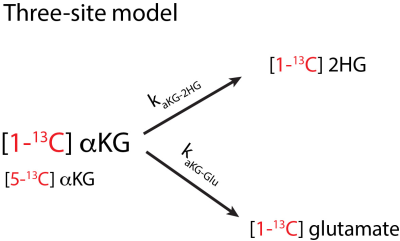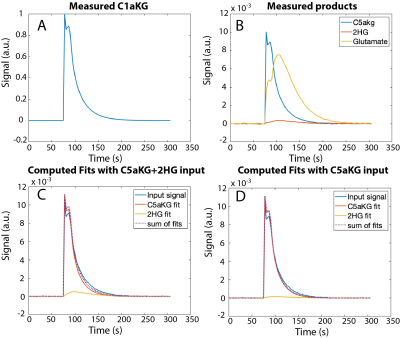Manushka V. Vaidya1, Donghyun Hong1, Sule Sahin1, Georgios Batsios1, Pavithra Viswanath1, Sabrina M. Ronen1, and Peder E.Z. Larson1
1Department of Radiology, University of California San Francisco, San Francisco, CA, United States
1Department of Radiology, University of California San Francisco, San Francisco, CA, United States
For
hyperpolarized studies using C1aKG, 2HG was detected separately from natural
abundance peak of C5aKG using a kinetic modeling framework. The computed
metabolic conversion rates of C1aKG to either 2HG or glutamate could be used to
monitor treatment response for low grade gliomas.

Figure 1:
Three-site model used in the kinetic model. The
model considers unidirectional conversion of hyperpolarized substrate
[1-13C]aKG to either [1-13C] 2HG or [1-13C] glutamate.

Figure 3:
Fits for dataset 1 using the overlapped fitting
method. Experimentally measured substrate (A), measured product signal (B), and
computed fits (C, D) are shown. For the cell lysate data, separate 2HG measurement
(B) was possible. A larger amount of 2HG was detected when C5aKG+2HG was used
as input (C) than the case when C5aKG alone (D) was inputted in the model. Fits
for C5aKG (red) and 2HG (yellow) are derived for the best summed fit (purple) w.r.t
the measured input signal (blue).